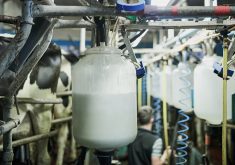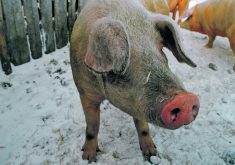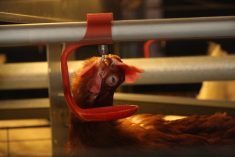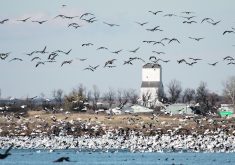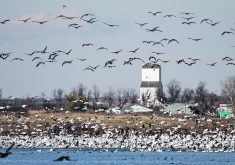Deadly poultry disease continues to be found in migratory bird populations and is now spreading into mammal species
The signs are pointing to another year in which poultry producers will face the threat of avian influenza as the virus continues to be found in wild migratory bird populations.
The virus is starting to affect other wild animals with a mass die off of nearly 600 sea lions in Peru linked to avian influenza infection.
“I don’t think we’re done,” said Shayan Sharif, professor at the Ontario Veterinary College researching the virus. “We might be done with the virus, but it’s not quite done with us.”
Read Also

New coal mine proposal met with old concerns
A smaller version of the previously rejected Grassy Mountain coal mine project in Crowsnest Pass is back on the table, and the Livingstone Landowners Group continues to voice concerns about the environmental risks.
The virus is becoming more volatile, not just infecting scavenging animals after they feed on infected carcasses, but it is now moving into other mammals.
“Most of the time, scavenging animals like skunks and raccoons or foxes, if they became infected, they would become terminal hosts meaning they would not have the capacity to transmit to other species or some of their own species,” said Sharif. “What has happened over the last couple of months is that now we’ve seen mink, for example, in Spain, becoming infected and there seems to be mink-to-mink transmission of the virus and that is very disconcerting.”
Regarding vaccination of poultry, Canada has been reluctant to go down the route, but there are signs of a change in that thinking. The United States and Europe are also rethinking that position.
Sharif said the shift in thinking is growing and poultry vaccination may be the future for the poultry industry.
“In the U.S. and European Union, they are becoming more cognizant of the fact something needs to be done.”
The push in Europe is being driven by France with support from the Netherlands, but it’s not fully supported by EU countries and the United Kingdom, said Sharif.
The current standards of biosecurity and containment through exclusion zones have worked well to ensure the bird flu hasn’t infected more domestic poultry flocks, but “they haven’t been 100 percent successful,” said Sharif. “Perhaps another layer would have to be added and that layer is potentially vaccination.”
Canadian poultry producers have struggled with containment of bird flu despite biosecurity measures, often commenting over the past year that the virus doesn’t appear to result from farm-to-farm transmission.
While Sharif wouldn’t exclude the possibility that some of the nearly 300 infected Canadian farms since late 2021 weren’t caused by farm-to-farm transmission, there are likely other factors at play.
“The presence of aerosols and the aerosolization of the virus and the virus hitchhiking on aerosol droplets going from one place to another” is a possibility, said Sharif. “But the issue with that is how long could a virus survive and how much distance could an aerosol droplet travel?”
There are also questions surrounding how much of such infected material is necessary to infect poultry.
“We don’t have a good answer and, in my lab, we’re trying to at least answer some of these questions, looking at feces as a source of transmission,” said Sharif. “We’re only just scratching the surface.”
Since December 2021, more than seven million birds in small flocks and commercial operations have been culled in Canada.
British Columbia continues to see the virus spread. It swept through the Fraser Valley of southwestern B.C. this fall and winter. However, only six commercial operations have reported cases in January, down from near daily reported cases from October to December.







